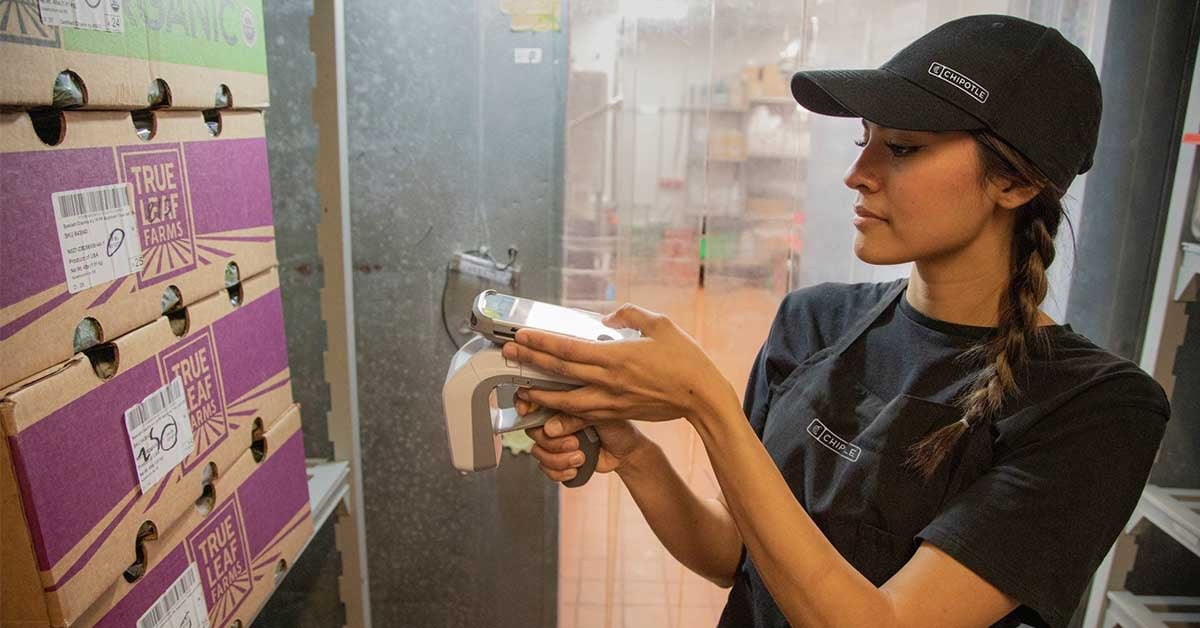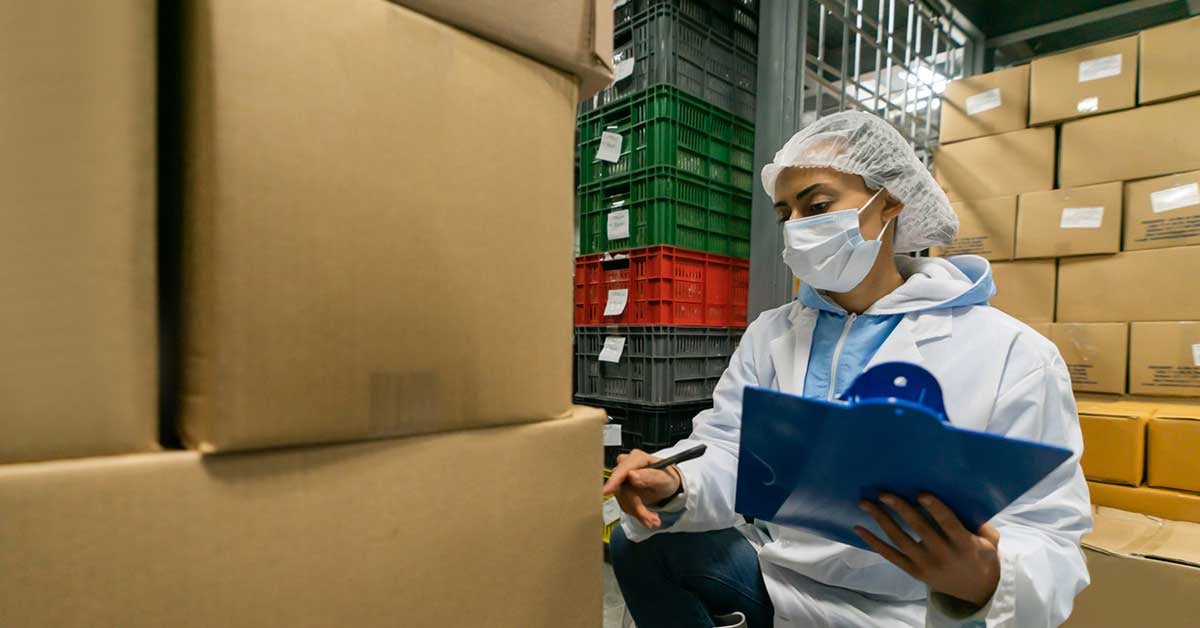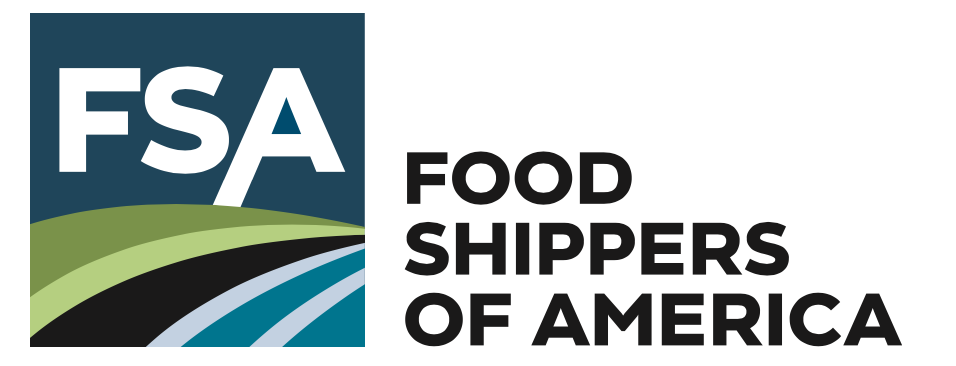Five Best Practices by Food Shippers to Enhance Your Supply Chain
by Brian Everett, on Jan 20, 2025 10:14:19 PM

Recent trends in the food industry demonstrate that food companies are enhancing their supply chains by focusing on three areas: Improving efficiency, resilience, and visibility. Here are examples of how several leading food companies have recently incorporated best practices to make meaningful improvements in these five areas:
Best Practice 1: Invest in Your Distribution Network. Many food companies strategically allocate resources and prioritization to enhance efficiency, reach, and customer satisfaction within their distribution channels. This will require analyzing your current distribution channels, researching potential channels, optimizing logistics resources and partnerships, investing in technology, potentially adjusting or expanding your market reach, monitoring and measuring results, and ensuring continuous improvements.
 Inside a Dollar General DC. The discount retailer is continuing to expand its distribution capabilities in the western United States by opening a new facility in Aurora, Colorado.
Inside a Dollar General DC. The discount retailer is continuing to expand its distribution capabilities in the western United States by opening a new facility in Aurora, Colorado.
 Dollar General, a discount retailer and member of the Food Shippers of America (FSA), has been placing a significant amount of energy shifting and improving its distribution center (DC) network. In fact, new and enhanced facilities in Arkansas, Colorado and Oregon have significantly changed the company’s supply chain strategy and effectiveness. In late 2024, the retailer opened a new state-of-the-art DC in Aurora, CO, which is a one million square foot facility, which is expected to create approximately 400 new jobs at full capacity and will also support the company’s growing DG Private Fleet presence. The move is part of the company’s goal to optimize its distribution capacity to its stores and customers throughout the United States, according to CEO Todd Vasos on a Q2 earnings call.
Dollar General, a discount retailer and member of the Food Shippers of America (FSA), has been placing a significant amount of energy shifting and improving its distribution center (DC) network. In fact, new and enhanced facilities in Arkansas, Colorado and Oregon have significantly changed the company’s supply chain strategy and effectiveness. In late 2024, the retailer opened a new state-of-the-art DC in Aurora, CO, which is a one million square foot facility, which is expected to create approximately 400 new jobs at full capacity and will also support the company’s growing DG Private Fleet presence. The move is part of the company’s goal to optimize its distribution capacity to its stores and customers throughout the United States, according to CEO Todd Vasos on a Q2 earnings call.
Best Practice 2: Optimize Inventory Management. Implement robust inventory management systems to track stock levels, minimize waste, and prevent stockouts. Consider using demand forecasting tools to predict future needs and optimize inventory levels.
 Based in Pennsylvania, Giant Eagle employs nearly 36,000 individuals and is one of the 40 largest family-operated companies in the United States – operating Giant Eagle, GetGo, and Market District stores.
Based in Pennsylvania, Giant Eagle employs nearly 36,000 individuals and is one of the 40 largest family-operated companies in the United States – operating Giant Eagle, GetGo, and Market District stores.
Giant Eagle, one of the nation’s largest food retailers and distributors (and member of Food Shippers of America) successfully transitioned three of its distribution centers (DCs) from an on-premises Manhattan WMS to Manhattan Active Warehouse Management. The grocery retailer plans to shift its remaining four DCs by August 2025.
 “The ability to get new features and functionality every quarter is invaluable,” says Dan Kapalko, Senior Director of Technology Systems at Giant Eagle. “We’ve already received several of these quarterly releases, and many of the new features, like the shipment progress screen, have become essential tools used by our Team Members every day in our three live warehouses. This continuous stream of enhancements gives us a competitive advantage, without the cost and disruption of a traditional upgrade.” (See article: Giant Eagle Powers Distribution Operations Through New WMS Technology)
“The ability to get new features and functionality every quarter is invaluable,” says Dan Kapalko, Senior Director of Technology Systems at Giant Eagle. “We’ve already received several of these quarterly releases, and many of the new features, like the shipment progress screen, have become essential tools used by our Team Members every day in our three live warehouses. This continuous stream of enhancements gives us a competitive advantage, without the cost and disruption of a traditional upgrade.” (See article: Giant Eagle Powers Distribution Operations Through New WMS Technology)
Best Practice 3: Enhance Supplier Relationships. Foster strong relationships with suppliers through collaborative communication, regular performance reviews, and supplier audits. Diversify suppliers to reduce reliance on a single source and mitigate risk. This also requires that you effectively and routinely review your supply chain partners – and perhaps even assess your RFP process.

In fact, when Materne North America attended a recent conference, they didn't just participate; they absorbed a wealth of insights that would shape their future strategy. At the time, snack food company was navigating the challenge of quarterly RFPs. However, armed with newfound market expertise and powerful data from Capac-ID, they made a bold move to transition to an annual RFP.
 The insights from the conference paired with monthly connects with the Breakthrough team proved to be valuable in the transition. Nicole Buttcher, Senior Manager of Logistics & Business Excellence, says: "It's a dynamic and engaging partnership, and that fluidity is what I love about it." The partnership thrives on open dialogue, allowing Materne to ask questions and adjust strategies as needed. This flexible approach not only fostered deeper discussions, but also ensured that the partnership effectively supported their strategic objectives in a constantly evolving market landscape.
The insights from the conference paired with monthly connects with the Breakthrough team proved to be valuable in the transition. Nicole Buttcher, Senior Manager of Logistics & Business Excellence, says: "It's a dynamic and engaging partnership, and that fluidity is what I love about it." The partnership thrives on open dialogue, allowing Materne to ask questions and adjust strategies as needed. This flexible approach not only fostered deeper discussions, but also ensured that the partnership effectively supported their strategic objectives in a constantly evolving market landscape.
From these conversations, Materne North America was able to engage in dynamic dialogues with their suppliers, successfully negotiating to maintain rates through the second half of the year. But they didn't stop there. By leveraging these insights, they crafted a strategic RFP that aligned with market conditions and decoupled freight from fuel spend. This shift allowed them to establish a zero-base rate and elevate their fuel efficiency expectations from 6.8 to 7.4.
Best Practice 4: Automate Your Supply Chain through Technology. Leverage technology to automate processes, streamline communication, and improve data visibility across the supply chain. Explore supply chain management software solutions to optimize inventory, track shipments, and manage orders.
 Source: Walmart
Source: Walmart
For example, Walmart has been slashing U.S. delivery costs by automating its supply chain – including automation in more than 50% of its fulfillment center volumes. Increased automation and more efficient driver routes helped the retail giant accomplish the feat for the third consecutive quarter. In fact, Walmart has significantly reduced its U.S. net delivery cost per order by 40% in Q3 2024 for the third consecutive quarter, according to Executive Vice President and Chief Financial Officer John David Rainey during an earnings call on Nov. 19.
 “There are a few key factors driving this improvement: delivery densification, increased penetration of paid expedited delivery orders and the automation of our supply chain,” says Rainey.
“There are a few key factors driving this improvement: delivery densification, increased penetration of paid expedited delivery orders and the automation of our supply chain,” says Rainey.
As Walmart scales its store fulfilled delivery business and expands its catchment areas, the mega-retailer has experienced significant improvement in batch density with orders per delivery up 20%, Rainey adds: “In addition, the popularity of expedited delivery has resulted in more than 30% of orders coming from customers and members that elected to pay a convenience fee to receive their delivery in less than one hour or less than three hours.”
And lastly, Walmart continues to make progress in the automation of its supply chain, as now more than 50% of the company’s fulfillment center volume is automated - which is twice as much at this same time last year. This has the obvious benefit of lowering the per unit cost of delivery. These factors contributed to the third consecutive quarter of approximately 40% reduction in U.S. net delivery cost per order, according to Rainey.
Focus on Demand Forecasting: Utilize data analytics to predict future demand, enabling you to optimize production, inventory, and logistics to meet customer needs effectively.
For example, Sunsweet Growers (a major producer of dried fruits) found that while it was managing distribution operations well, high production costs were inflating end-to-end supply chain expenditures. Upon further exploration, the company found that its distribution network was partly behind the problems.
Sunsweet explored network redesign options to eliminate some production costs and shifted its approach to demand forecasting from a manual forecasting approach using only spreadsheets to an elaborate use of supply chain planning technology. Sunsweet also implemented a sales and operations planning program (S&OP) that enabled plant resource requirements to be anticipated months (rather than weeks) in advance. As the overall improvement plan passed through its five phases, Sunsweet was able to reduce production costs, increase in forecasting accuracy, reduce overtime in production facilities, significantly reduce finished-goods spoilage, and cut the number of U.S. warehouses from 28 to just eight. In addition, a transportation cost-per-unit remained static for two years despite increased utilization of costly refrigerated transport and rising fuel costs.
Best Practice 5: Prioritize Food Safety. Implement tracking systems to monitor shipments in real-time, gaining insights into the location and status of goods throughout the supply chain.

Chipotle Mexican Grill is scaling up its use of radio-frequency identification technology (RFID) to trace ingredients from suppliers to restaurants in real-time and strengthen its inventory systems, says Carlos Londono, Vice President of Supply Chain at Chipotle Mexican Grill. A leader in food safety within the restaurant industry, Chipotle is one of the first major restaurant companies to leverage RFID case labels to track ingredients from suppliers to restaurants via serialization.
 “Food safety continues to be a priority for every food company in the world and it’s imperative to know where your products come from and where they’ve been at all times,” says Londono. “You need good visibility of the value chain so if something were to happen you can address the problem right then and there. That’s why we decided to head down this path and identify a technology that could help us achieve this capability.”
“Food safety continues to be a priority for every food company in the world and it’s imperative to know where your products come from and where they’ve been at all times,” says Londono. “You need good visibility of the value chain so if something were to happen you can address the problem right then and there. That’s why we decided to head down this path and identify a technology that could help us achieve this capability.”
Armada, one of the largest outsourced logistics providers to the U.S. foodservice industry, has implemented policies and procedures in compliance with regulations, client expectations, and global food safety standards to ensure product integrity is maintained.

 “We monitor regulatory and global food safety sources regularly to ensure we are aligned with current food safety legislation, global standards, and industry best practices,” says Craig Rykaczewski, Senior Director of Quality Systems for the company. “Armada’s warehouse facilities voluntarily certifies to Safe Quality Food (SQF), a Global Food Safety Initiative (GFSI) benchmarked standard, to ensure our quality system meets the highest standards in food safety.” (See article: Ask Our Experts: Food Safety & Security)
“We monitor regulatory and global food safety sources regularly to ensure we are aligned with current food safety legislation, global standards, and industry best practices,” says Craig Rykaczewski, Senior Director of Quality Systems for the company. “Armada’s warehouse facilities voluntarily certifies to Safe Quality Food (SQF), a Global Food Safety Initiative (GFSI) benchmarked standard, to ensure our quality system meets the highest standards in food safety.” (See article: Ask Our Experts: Food Safety & Security)
He mentions the company also takes it a step further and voluntarily certify to the minimum-security requirements of Customs Trade Partnership Against Terrorism (CTPAT), which is a U.S. Customs and Border Protection program that focuses on securing international supply chains. Armada leverages the CTPAT program requirements in development of its domestic programs where it helps mitigate risk, such as using ISO 17712 compliant trailer seals and verifying seals using the VVTT method:
- V – View seal and trailer locking mechanisms; ensure they are OK
- V – Verify seal number against BOL
- T – Tug on seal to make sure it is affixed properly
- T – Twist and turn the seal to make sure its components do not separate from one another, or any part of the seal becomes loose
“We require that carrier partners monitor trailer seals while the load is in-transit and are required to advise us if there is an issue with trailer seals at any stop,” he continues. “We follow the rule that any load at rest is a load at risk.”
Armada’s QA Team leads the investigation for any food safety/security issues that occur throughout the supply chain. By partnering with the company’s supply chain partner’s Quality Assurance (QA) Teams, Armada is able to determine if products are safe to continue to their destination.
Related Articles:
- Giant Eagle Powers Distribution Operations Through New WMS Technology
- Materne North America made a bold move to transition quarterly RFPs to an annual process
- Building Supply Chain Resiliency (and Fixing Top Challenges)
- Ask Our Experts: Food Safety & Security
- Starbucks Makes Supply Chain Investments for Climate Resilience
- Dollar General Opens New DC in Colorado
Like this kind of content? Subscribe to our "Food For Thought" eNewsletter!
Now more than ever, professionals consume info on the go. Distributed twice monthly, our "Food For Thought" e-newsletter allows readers to stay informed about timely and relevant industry topics and FSA news whether they're in the office or on the road. Topics range from capacity, rates and supply chain disruption to multimodal transportation strategy, leveraging technology, and talent management and retention. Learn More



